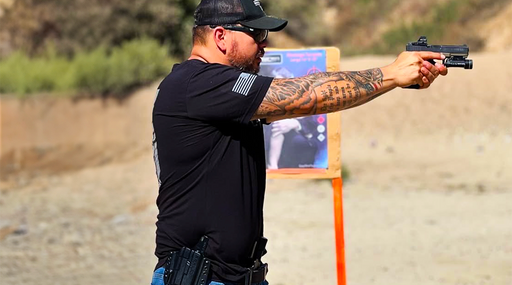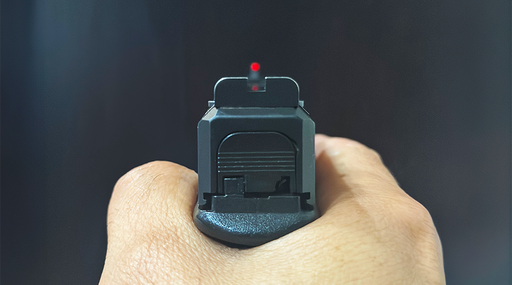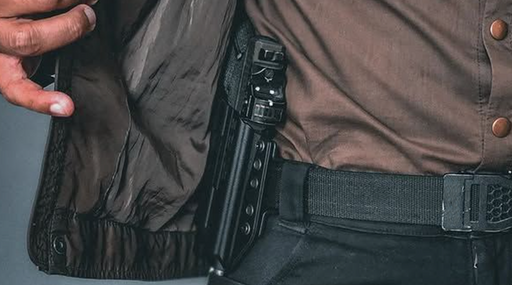Carrying concealed when the chill is on
Cold weather season is here, and with it comes both new opportunities and new challenges for comfortable and accessible concealed carry. If you’re thinking of changing things up to accommodate lower temps and extra layers of clothing, here are a few factors to consider.
A bigger gun?
More layers mean more opportunities to conceal. A larger gun is often preferable for ease of handling, and a longer sight radius means easier aiming. In some cases, a larger gun also offers greater capacity. These are all attractive and valid reasons to consider toting a bigger firearm during the cold months.
The drawbacks to switching guns are the potential need for a second carry system. A compact or full-size gun in a shoulder holster is a once-popular option that works well under an open-front, loose-fitting jacket or sport coat. Or perhaps you’ll choose a pocket holster for your winter coat. This too can be a viable option, though drawing the gun from a pocket holster can present logistical and safety challenges.
A new carry location?
The inside-waistband, belly band, or ankle method many use for summertime can make the gun rather inaccessible under winter clothes. If you find your carry method takes more than two seconds to draw, there’s a good possibility your gun will not be presented in time, if at all, in a deadly force encounter.
With thicker layers on, would it make sense to wear an OWB gun holster under a jacket? Although off-body carry is generally less secure and slower, perhaps a purse or sling bag is a better option than unzipping and unbuttoning like a harried stripper as you make your way to the gun.
Practice is essential.
Regardless of the carry method you choose for the winter season, whether it’s new to you or not, practice drawing. Winter clothing will almost surely complicate your draw. Even if the gun is comfortingly in your grip as you walk down the street, secure in a pocket holster in the slash pocket of your cozy down vest, chances are it comes out of said pocket still wearing that holster!
The good thing is, most of your cold-weather practice doesn’t require a gun range. It mostly requires that you UNLOAD THE GUN, INCLUDING MAGAZINE AND CHAMBER, and GO TO ANOTHER ROOM OF YOUR HOME, away from that ammunition, for practice. *
How to practice the cold-weather draw
With the holster and empty gun in concealment, attempt first a draw using only the primary hand, going from concealment to having sights aligned on a point across the room that’s also in a safe direction where the muzzle is concerned. Sometimes, swift and assertive action is required to clear a coat out of the way and complete the draw before it falls back into place. A one-handed draw is preferable and practical for self-defense, as many encounters happen too fast to establish a two-handed grip. If your other arm is taken up with non-droppable things—like a child or pet—freedom to draw and fire with the primary hand is essential.
- -If your carry position invites sweeping non-threat areas with the muzzle between holster and target, it’s a good idea to orient the muzzle groundward until it can be pushed in the target’s direction.
- -Between draw attempts, re-holster with care. That means no muzzling of any of your own body parts, including the support hand, before the gun is holstered. It also means ensuring that the opening of the holster is free and clear of obstructions. Loose-fitting shirts are the most frequent offender for holster obstruction—which can create the very serious issue of a round entering the body if you keep pushing the gun into its sheath when some garment is inside the trigger guard.
- -Time yourself. Can you present the gun, preferably in a proper two-handed grip, and see your aligned sights on target in less than two seconds, without performing any muzzle or trigger-finger transgressions? If you wear gloves outdoors, don them. Are you still able to draw and safety get your finger into and out of the trigger guard? If not, consider thinner or fingerless gloves.
- -This dry-gun drill, especially when timed, is a good way to compare different carry methods to find one that serves you best. Once you’re completely safe and as efficient as possible wit your cold-weather draw, take your practice to the range. Depending on your carry system, re-holstering may be laborious. Don’t rush, and don’t violate finger or muzzle safety rules. Most negligent discharges happen during re-holstering!
*Bravo Concealment, the author, and any associated parties bear no responsibility for the consequences of unintended discharges during practice. Gun safety is YOUR responsibility.
Eve Flanigan is a defensive shooting and concealed carry instructor living in the American Southwest. Today she works full time as an instructor and writer in the gun industry. Flanigan loves helping new and old shooters alike to develop the skills needed to keep themselves and their loved ones safe.





















Leave a comment